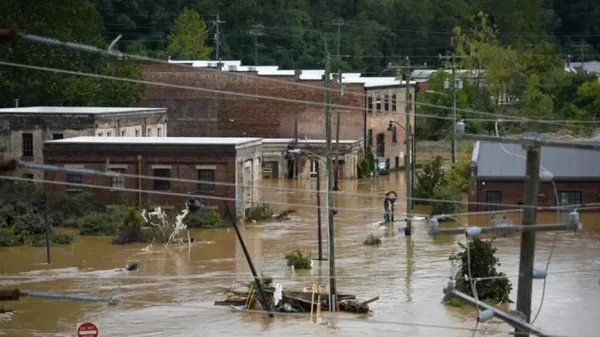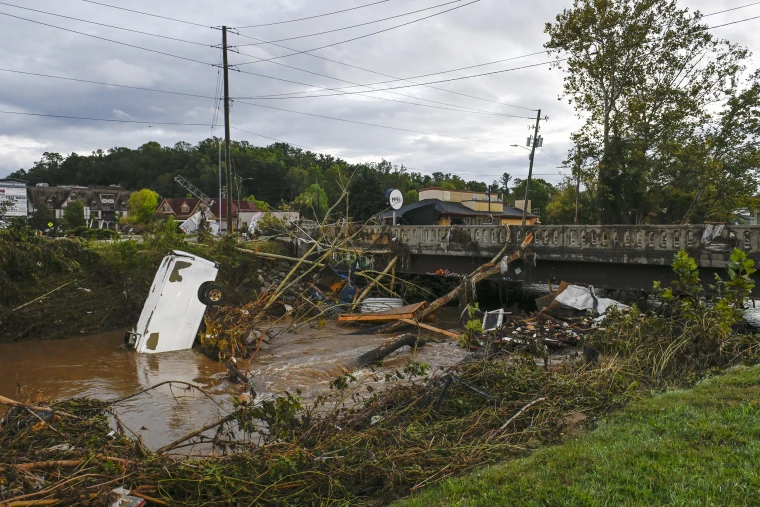
Hurricane Helene’s death toll reaches 182 as of this evening, making it the deadliest hurricane since Hurricane Katrina. With winds reaching 140 mph, the category 4 storm made landfall in Florida on September 26, leaving catastrophic winds and flooding in its path across the southeastern United States.
Over 48 hours, Helene caused up to 15 feet of surge floods destroying small towns, leaving millions without power in 6 states, floods and debris have destroyed houses, cars, upturned trees, and inundated roads, CNN says.

Many communities in western North Carolina have been hit the worst, with many of these towns once called “climate havens”. Hundreds of miles away from any coastline and nestled in southern Appalachia with a mild climate, the flooding in these areas reached levels that were expected once every 1000 years.
Experts say climate change is creating more powerful storms due to higher ocean temperatures and warmer atmosphere. According to NBC News, for every degree Fahrenheit of warming, the atmosphere can hold 4% more moisture, increasing chances of devastating flooding. Warmer temperatures help hurricanes spin faster and gain strength, enabling Helene to grow from a category 1 to a category 4 in just a day. Due to the heavy rain in the area days before Helene and the steep terrain of the region, the flooding was catastrophic.

Ironically, the US’s primary weather data center, The National Centers for Environmental Information (NCEI), is located in Asheville, North Carolina, one of the most devastated areas, and is currently offline due to being submerged in floods.
Hurricanes were originally thought of as a coastal problem but due to global warming, the effects of these storms are carried much further than normally expected. Stronger hurricanes like Helene are to be expected in the coming years. Affected communities will not be able to fully rebuild and go back to normal for months or even years.



























